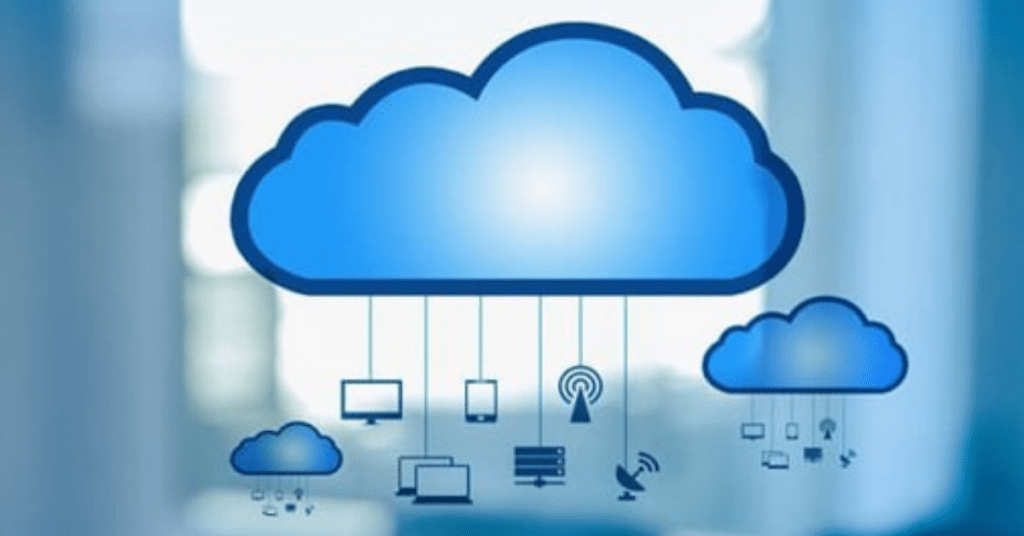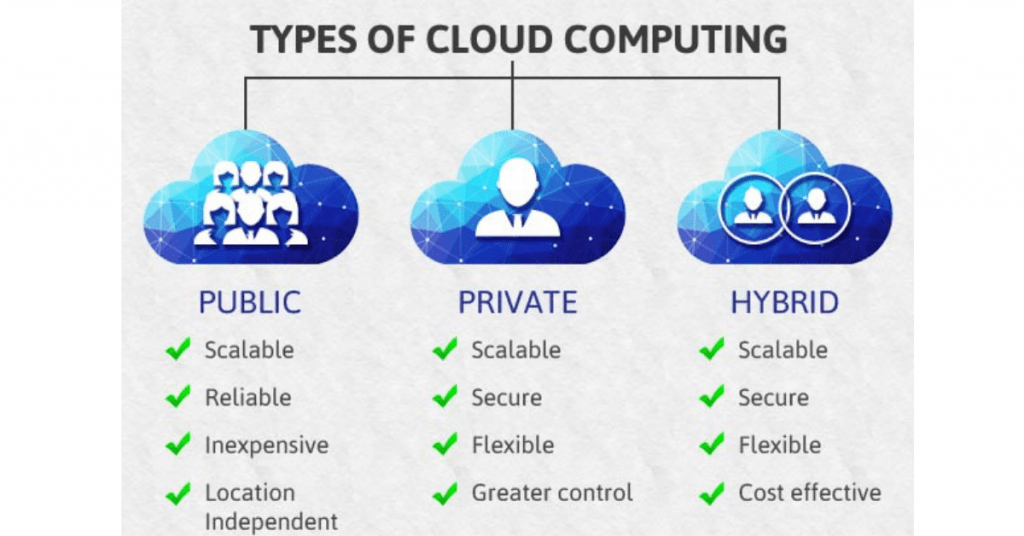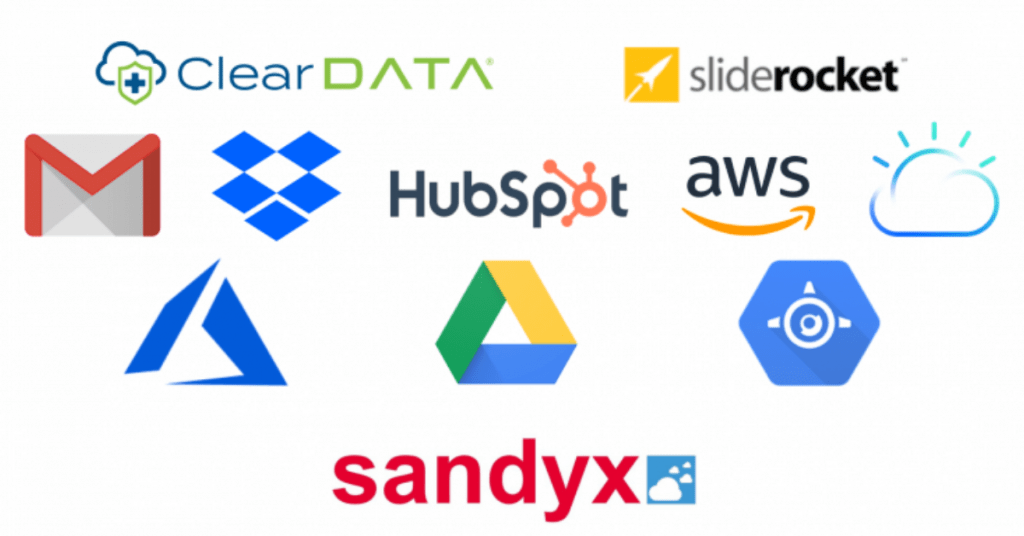Page Contents
WHAT IS CLOUD COMPUTING?
Cloud computing is the on-demand availability and delivery of computing services such as data storage, computing power without the direct involvement of user to manage it.
You generally buy those only cloud services you employ. It helps in lowering operating costs, running your infrastructure more efficiently and scaling as your business needs change.
In cloud computing, the network resources are supplied dynamically. Some of the networking concepts that form the core of the cloud computing are virtual local area networks, virtual private networks and different protocol layers.
CLOUD COMPUTING MODEL
Consists of variety of complex service models such as SaaS, PaaS, IaaS, and serverless computing. It commonly contributes in load balancing and they are theoretically infinitely scalable.
Here, virtualization is the core concept.

TYPES OF CLOUD COMPUTING

SOFTWARE AS A SERVICE [SaaS]
It is basically defined as the software that is deployed over the internet. With SaaS, a provider authorizes an application to customer as a service on demand, through a subscription
in a pay-as-you-go model or at no charge. When there is no opportunity to generate revenue from streams other than the user such as from advertisement.
The web access is provided to commercial software. Central location manages the software.
Software is delivered in one to many model. The users do not bother to keep up with software upgrades and patches.
Application programming interfaces[API] allows the integration between different pieces of software.
There are different areas where SaaS may be useful like applications where there is significant interplay between organization and
outside world or when there is need for web or mobile access eg mobile sales management software.
It may be useful for software used for short term needs or software where demand spikes significantly.
SaaS may not cope up with the requirements of extremely fast processing of real time data. Also when legislation or other regulation does not permit data to be hosted externally.
PLATFORM AS A SERVICE [PaaS]
PaaS can be delineated as a cloud computing platform that allows the formation of web applications quickly and easily. It is without the convolution of buying and maintaining a software with the infrastructure underneath it.
PaaS is analogous to SaaS except that it does not deliver the software over the web. It’s a platform for the creation of software to be delivered.
It provides services to build, examine, deploy, host and maintain the applications in the same integrated development environment.
web based user interface creation tools helps to produce, modify, test, and deploy different UI scenarios.
Moreover, multi tenant architecture where multiple concurrent users utilize the same development application can be executed smoothly.
Due to the inbuilt scalability of deployed software with load balancing and failover, the mixing with web services and databases happen via common standards.
It acts as support for development team collaboration. Many PaaS segments include project planning and communication tools to handle billing and subscription management.
PaaS is particularly useful in situations where multiple developers work on a development project. Th external agents got to interact with the event process.
Popularity of agile software development, a group of software development methodologies based on iterative and incremental development will also increase the uptake of PaaS as it eases the complications around rapid development and iteration of software.
It may not be that efficient where applications demand high portability in terms of hosting point and development process of proprietary languages or approaches etc.
INFRASTRUCTURE AS A SERVICE [IaaS]
It is the delivering of cloud computing infrastructure-servers, storage, network and operating systems as an on-demand service.
Clients should buy those resources such as servers, software, datacenter space etc. as a complete externalized service on demand.
The resources are distributed in terms of service. This allows dynamic scaling with a fluctuating cost. The utility pricing model generally includes multiple users on a single piece of hardware.
Now, IaaS has a great role where demand is volatile. There are remarkable peaks and troughs in terms of demand on the infrastructure for new organizations having low or almost no capital to invest in hardware.
It is useful when organization grows rapidly and scaling hardware would be problematic with pressure on the organization to limit capital expenditure and shifting to operating expenditure
for specific line of business and temporary infrastructural needs.
Choosing IaaS might not be the simplest option where regulatory compliance makes the offshoring or outsourcing of knowledge storage.

SERVERLESS COMPUTING
It describes the cloud computing services and strategies that permits you to build more agile applications responding to change faster.
In these serverless applications, the cloud service provider automatically allocate, scale and manage the infrastructure required to run the code.
While understanding the definition of serverless computing, it is prior to keep a check that servers are still running and executing the code.
The serverless name comes from the fact that tasks associated with infrastructure provisioning and management are not visible to the developer.
Serverless computing helps in increasing the overall productivity and marketize the product faster.
It allows the organizations to optimize resources in a better way.
(Written by Tushar)





Very informative !
Good work👍🏻👏👏
Very informative Tushar g
Great work It was very informative ✨✨👍👍
Good Work, as always
Very Edifying
Interesting and informative 👌
Great work. Looking forward for more contents.
Very informative 👏👌🏻
Excellent way of putting up things I guess. The content is really upto the mark. Hope to read more of his works.
👌🏻👌🏻
Very informative
Great work, good information…. Keep it up!!
Informative and amazing 👏💫
.
Amazing 👏🏻🔥🔥
very informative🌸💯☀️
Very well crafted